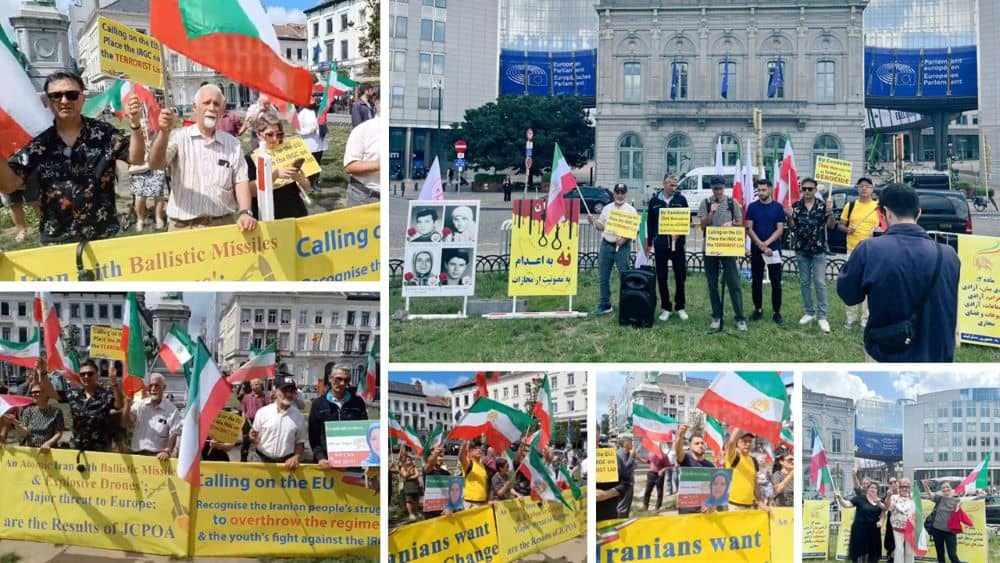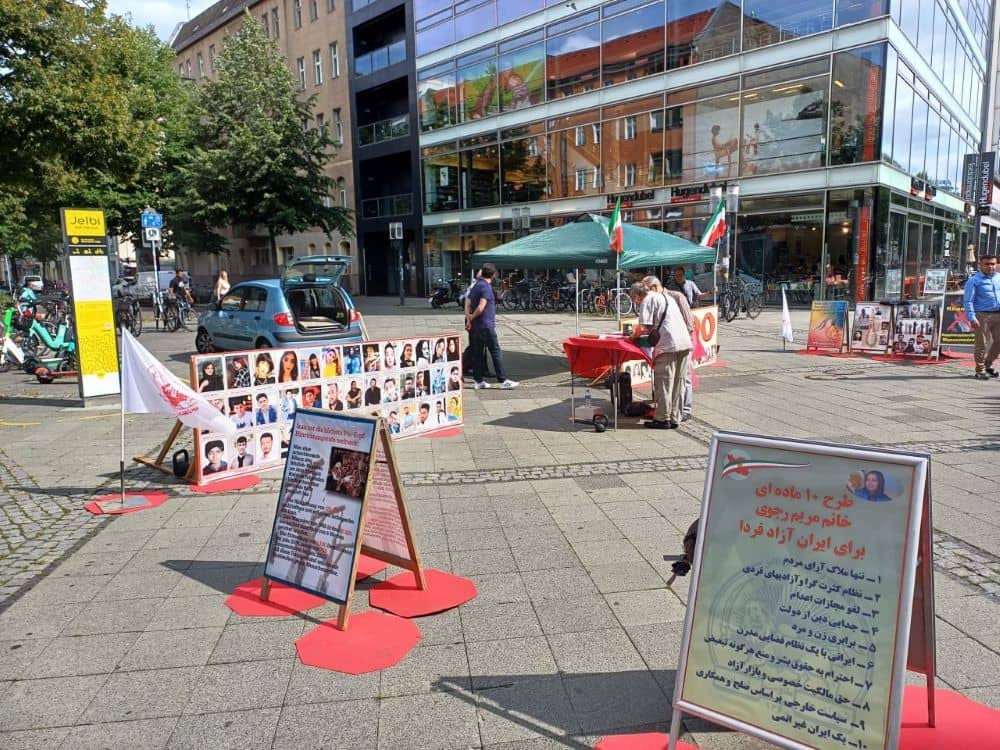Onward to a Democratically Elected Republic in Iran, Prosecute Clerical Regime Leaders for Crimes Against Humanity, Genocide
Free Iran 2023—Day 3—Paris, July 3, 2023: Following the Free Iran World Summit 2023 held on Saturday, July 1, and Sunday, July2, the National Council of Resistance of Iran (NCRI) convened its third consecutive conference at its headquarters in Auvers-sur-Oise. The primary objective of this summit is to address the gravest crime committed against humanity by the clerical regime in Iran.
In the summer of 1988, the Supreme Leader at that time, Khomeini, issued a religious decree with the intention of eliminating the most severe threat to his regime’s existence. This decree, known as a ‘fatwa,’ called for the systematic execution of all imprisoned members of the Mojahedin-e-Khalq Organization (MEK/PMOI) in Iran. Over the course of a few weeks, more than 30,000 political prisoners, primarily consisting of devoted MEK members, were executed throughout the country.
The 1988 massacre has received widespread condemnation as genocide from numerous human rights activists and political experts. It was orchestrated by some of the highest-ranking officials of the clerical dictatorship, including the current president, Ebrahim Raisi.
Considering that the Iranian regime still holds the unfortunate distinction of being the world’s largest state executioner per capita, leaders and legislators from various nations have gathered at the NCRI event to engage in discussions. Their primary purpose is to address the ongoing massacre of political prisoners and call upon the international community to end the regime’s impunity. They will advocate for holding the Iranian authorities accountable for their crimes against humanity. Additionally, the participants are appealing to the United Nations to take action and protect the thousands of Iranian protesters who are currently suffering in prisons within Iran.
Onward to a Democratically Elected Republic in Iran, Prosecute Clerical Regime Leaders for Crimes Against Humanity, Genocide #FreeIran2023 #1988Massacre #OurChoiceMaryamRajavi https://t.co/dGAgX5wQDG
— Iran Freedom (@4FreedominIran) July 3, 2023
This Page is Being Updated With the Latest Developments From the 3rd day of the Free Iran World Summit 2023.
Mrs. Maryam Rajavi, the President-elect of the National Council of Resistance of Iran (NCRI)
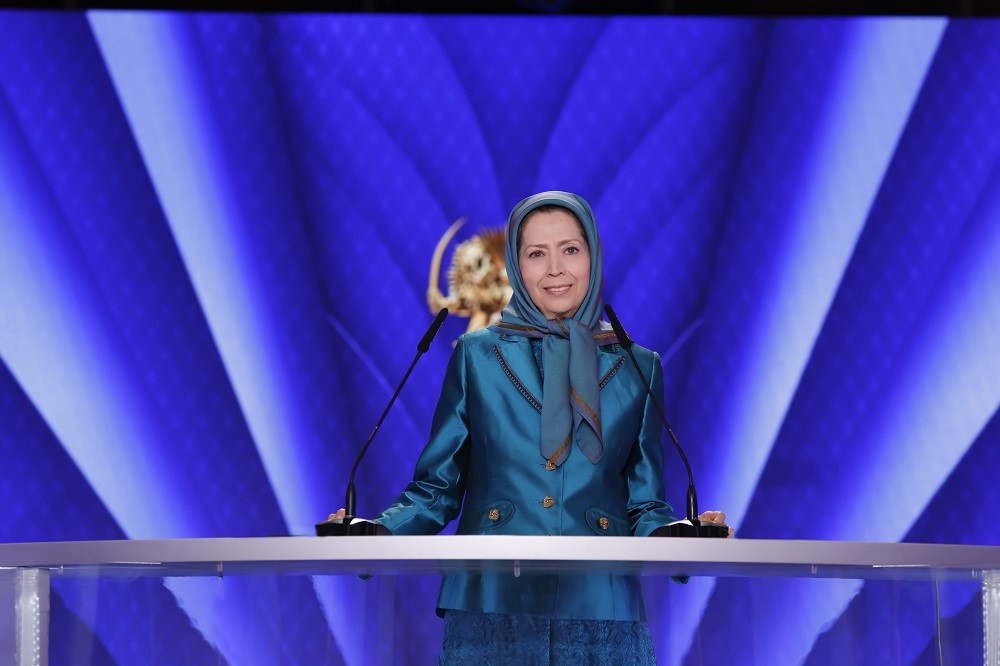
Honorable dignitaries, dear compatriots,
On the brink of the 35th anniversary of the massacre of 30,000 political prisoners, we pay tribute to those who gave their lives for freedom and cultivated the seeds of unwavering uprisings; they are indeed the martyrs of the Iranian people’s Democratic Revolution. The untainted blood of those innocent souls massacred in 1988 resonates today in the ongoing uprisings of the Iranian people and continues to inspire and motivate rebellious youths across generations.
Thousands of PMOI heroes bravely stood their ground, defending their political identity and ideals. They marched to the gallows, shouting ‘Long Live Massoud’ and welcoming their martyrdom. Their aspirations and ideals remain just as relevant in contemporary Iranian society.
The past few months have witnessed the imprisonment of 30,000 defiant young men and women who fearlessly challenged Khamenei’s regime. Among them are selfless and devoted men and women who established the Resistance Units. They are united in their fight for the cause of freedom, equality, and the rejection of oppression.
The People’s Mojahedin, a name that burns with crimson passion in Iran, has emerged from this ideal, painting the dawn with its fiery red spirit.
After 44 years of slandering the PMOI and spreading lies about their generations, the mullahs’ fury remains unabated. Their heartless fear of any group affiliated with the PMOI, even thousands of kilometers away from Iran, stems from a cause that transcends time and place.
While the mullahs strive to impose their rule characterized by coercion, tyranny, and oppression, the arisen generation in Iran yearns for freedom and a people’s republic. This is a cause that shall ultimately prevail.
Khomeini’s objective: genocide and annihilation of the PMOI
Thirty-five years ago, during the final days of July, the harrowing specter of death silently and swiftly cast its shadow over the country, targeting anyone who stood their ground as a member of the PMOI, as Khomeini had stated in his fatwa. According to mullah Moghtadaii, an executioner, Khomeini held consecutive meetings with his henchmen, urging them to continue their grim task without the slightest hesitation or fear. Khomeini harbored genocidal intentions, seeking the annihilation of the PMOI, which he perceived as an existential threat to his regime.
As the massacre unfolded in prisons such as Evin and Gohardasht, only a small number of PMOI prisoners remained in other cities. Tragically, in some prison wards, not a single PMOI prisoner survived.
Massacres in prisons across Iran
The collection presented here sheds light on the massacre of PMOI prisoners in various cities throughout Iran (excluding the capital Tehran). This collection is a meticulous documentation of testimonies and written accounts from eyewitnesses who saw the massacres in dozens of cities and provincial capitals.
The book “Crimes Against Humanity” reveals the staggering toll of the 1988 massacre, documenting the names of over 5,000 PMOI prisoners who were brutally killed. What is particularly startling is the remarkable extent of the massacre, as it unfolded in 110 cities across Iran.
Astonishingly, the book lists only eight names at the Prison of Qom, even though at least 150 PMOI prisoners valiantly resisted their oppressors in that facility. Similarly, only four names are listed for each of the cities of Mahshahr, Bandar Gaz, Chalous, Ramsar, and Garmsar. In 18 cities, only two or three names are listed, and in 34 cities, only one name is provided with detailed specifics. This is while it is widely known that all these prisons were full of PMOI prisoners.
In some prison wards, the regime’s executioners showed no mercy, leaving no survivors. The Research Unit on the Martyrs of the Iranian Resistance has compiled long lists of nicknames whose associated real identities remain unknown. Those who might have known these individuals fell victim to the massacre, leaving no traces of those martyrs.
Following the massacre of PMOI prisoners in 1988, another wave of executions took place in Evin and Gohardasht prisons, targeting non-PMOI prisoners, predominantly those affiliated with Marxist ideologies.
Regarding the massacre of PMOI women, the Prosecutor of the Court of Stockholm explained: “Women were executed in the initial wave. Throughout our investigations, we could not find any women who survived the executions.”
The head of the Death Commission in Tehran during the 1988 massacre was Nayyeri, who made the following statement regarding the events: “If the Imam (Khomeini) had not been as decisive… the entire regime would not have survived.”
During the early 1980s, the Khomeini regime operated a vast network of over 300 prisons, aside from the IRGC safe houses, and Prosecutor’s detention centers, and various Komitehs.
Seeking justice for the victims of the massacre
The Call for Justice Movement emerged in the early weeks following the commencement of the massacre. Massoud Rajavi, the Leader of the Iranian Resistance, took action by sending telegrams to the UN Secretary-General in August 1988, unveiling Khomeini’s fatwa that authorized the mass killing of PMOI prisoners who continued to adhere to their beliefs. Thus began the justice movement.
Iranians in various countries expressed their outrage by staging demonstrations, hunger strikes, and symbolic people’s tribunals. Reports of these acts of protest and related pictures were documented and covered in the Resistance’s publications. Notably, there was even a tragic case of self-immolation in the United States.
Since 2016, the Iranian Resistance has placed the Call for Justice for the victims of the prisoners’ massacre at the forefront of its agenda.
Also, at the international level, the Call for Justice Movement drew the attention of conscientious individuals to the massacre of political prisoners in Iran. The 1988 massacre has been noted in the resolution adopted by the majority of members of the US Congress, in the open letter by 117 former world leaders, and declarations by majorities in parliaments of 28 countries.
In December 2020, seven UN special rapporteurs warned that the 1988 massacre of political prisoners should no longer remain unpunished.
Today, we have the privilege of having several former UN rapporteurs among us, whose presence I would like to acknowledge and honor.
Furthermore, I would like to express my deep appreciation for the dedicated efforts of the Justice for Victims of the 1988 Massacre in Iran (JVMI) organization under Mr. Tahar Boumedra, the former head of the UNAMI human rights office in Iraq.
Mr. Boumedra has been instrumental in various initiatives, including the publication of several books and his leadership in numerous calls and open letters advocating for an international investigation into the massacre. One significant effort is the call signed by 462 current and former UN officials, judges of international courts, and prominent political personalities.
Among other activities is the publication of a pamphlet by the US Representative Office of the NCRI in Washington, DC, entitled “The Case to Hold Ebrahim Raisi to Account for Crimes Against Humanity.”
After several decades, the United Nations acknowledged the 1988 massacre in its reports, including in the report of the UN Special Rapporteur on human rights in Iran and the report by the UN Secretary-General. These documents highlighted the need for an independent investigation into the massacre.
Despite all this, the international community’s response to the 1988 massacre has fallen woefully short of what is necessary and expected. For other comparable or larger-scale crimes that have taken place over the past 50 years, the UN has established Special Courts or independent inquiries. The lack of such actions regarding the 1988 massacre in Iran raises questions about the reasons behind this inaction.
I reiterate that granting impunity to the masterminds of the massacre is seen as characteristic of the West’s policy of appeasement, which needs to end.
The trial of Hamid Nouri, another crisis for the regime
The arrest of Hamid Nouri, one of the perpetrators of the 1988 massacre at Gohardasht Prison, created a significant scandal and crisis for the regime.
The arrest (in Sweden) took place in 2019, three-and-a-half years after the renewed advocacy for the Call for Justice Movement by the Iranian Resistance. The mullahs’ Intelligence Ministry attempted to discredit the movement and use it against the PMOI. However, the Iranian Resistance’s persistent efforts, including its extensive awareness campaigns, demonstrations by compatriots outside the courthouse for nearly two years, active engagement of PMOI members and supporters as witnesses and plaintiffs in the trial, relocation of the court proceedings to Albania for two weeks, and submission of numerous documents, ultimately led to the conviction of Hamid Nouri to life imprisonment. These collective actions thwarted the clerical regime’s schemes and plots.
This is of particular significance that in contrast to Hassan Rouhani, Ebrahim Raisi, the current regime president, has been legally implicated as one of the prime perpetrators of the 1988 massacre.
For this reason, in parallel to its scheme to release Assadollah Assadi, its bomb-carrying terrorist diplomat in Belgium, the clerical regime has engaged in an all-out diplomatic, intelligence, and press campaign in Sweden. Hostage-taking diplomacy tactics have been employed, and suspicious elements and operatives have been deployed to pressure Sweden to disregard the principles of law and justice.
We warn that releasing the perpetrators and masterminds of this genocide and crime against humanity for any reason or excuse is absolutely unjustified. It would only give the clerical regime the green light to perpetrate further bloodshed, escalate terrorism, and engage in more hostage-taking.
The cause of PMOI martyrs lives on
The Call for Justice Movement has played a crucial role in preserving the memory, names, and cause of the PMOI prisoners who were massacred for their unwavering stance. By doing so, the movement has contributed to enriching the historical consciousness of Iranian society. It has become a source of inspiration for subsequent uprisings in Iran, driven by the purest motivations.
The spirit of countless victims, whose identities and resting places remain unknown, continues to live on throughout the country, cultivating the seeds of rebellion and revolt because of their sacrifice.
The fact that the Iranian people consider the mullahs their most callous enemy is a direct byproduct of the sacrifices made by these victims.
The Call for Justice Movement advances the struggle anchored in the indomitable spirit of “standing one’s ground.” This principle holds the key to resisting the forces of oppression and destruction and is pivotal to advancing the revolution.
Standing one’s ground is the secret to defeating Khomeini and his ideology. It has been instrumental in the survival of the PMOI from its founder Mohammad Hanifnejad’s era to the present day.
Seeking justice is indispensable to the Resistance to overthrow the regime
At this moment, I would like to appeal to all former political prisoners, families, acquaintances of the victims, and supporters of the PMOI. I urge you to compile and document any information you may have regarding the 1988 massacre, even if it is as short as a single sentence or a word.
It is of utmost importance that the acts of genocide, crimes against humanity, and massacre perpetrated by the Iranian regime are officially registered in those terms by national and international courts and the UN Security Council. These grave offenses must be subject to international investigations carried out with the participation of representatives from the Iranian Resistance.
Crime against humanity started from the early years of the regime’s rule, reached a peak during the 1988 massacre, and has continued to date. Over the past 44 years, all the clerical regime’s leaders have been involved in crimes against humanity. Therefore, the independent international fact-finding mission, formed last year to investigate the execution of protesters during the 2022-2023 protests, should also examine the regime’s dossier of crimes against humanity. Crimes against humanity are inherent to the regime and comprise an interconnected and indivisible whole.
The Call for Justice Movement is driven by a profound desire for justice, aiming to address the long-standing oppression and exploitation inflicted by the Iranian regime over the past 44 years. Its quest for justice extends to the plight of all those who have fallen victim to the regime’s unjust practices.
The movement actively pursues justice for our fellow compatriots in Kurdistan who the IRGC mercilessly massacred in Ghalatan and Gharena. It also seeks justice for the Baluch victims who lost their lives during the tragic events in Zahedan and our Arab compatriots in Khuzestan who have endured killings and suppression.
Furthermore, the Call for Justice Movement advocates for justice for the 1,500 martyrs of the November 2019 uprising and the 750 martyrs of the most recent uprisings in 2022 and 2023.
This campaign will continue until it brings Khamenei, Raisi, and other masterminds of this crime against humanity to justice. The Call for Justice is indispensable to the Resistance to overthrow the mullahs’ religious fascism.
My dear sons and daughters throughout Iran,
You, who are preparing for the uprising every day, ready to rise up; You, who have chosen to pay the price of this struggle, remember that the duty to advance the movement seeking justice for the martyrs falls upon the shoulders of each and every one of you.
Their voices echo through every street and alley, emerging from the marked and unmarked graves. They call upon you to be their voice, to spread their spirit of rebellion and defiance far and wide. It is you who must lead the Call for Justice movement and the uprisings that will bring down this bloodthirsty and oppressive regime.
The day of victory for the Iranian people will arrive. On that day, the people’s tribunal will hold the ruling mullahs accountable for their countless crimes. Rest assured, that day will come.
May God bless the resilient people of Iran, and may the martyrs be honored and remembered forever. Long live freedom!
Ms. Azadeh Zabeti, Lawyer and Moderator of the Conference
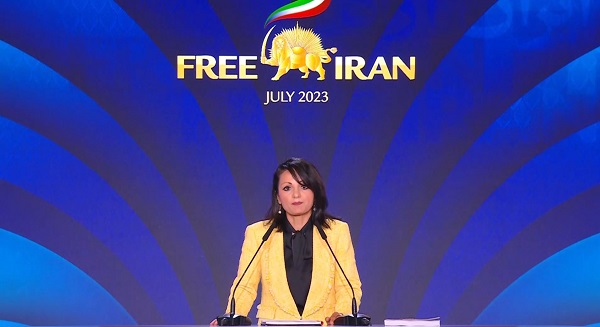
Ms. Azadeh Zabeti, Lawyer and Moderator of the Conference #FreeIran2023—Day 3 (Prosecute Clerical Regime Leaders for Crimes Against Humanity, Genocide)#1988Massacre #OurChoiceMaryamRajavi #Iran https://t.co/X2eiMs3sdV
— Iran News Update (@IranNewsUpdate1) July 3, 2023
Dr. Tahar Boumedra, Chief of the Human Rights Office of the United Nations Assistance Mission for Iraq (UNAMI) (2009-2012), JVMI Chair

I spent my career in Africa and when I went to Iraq, I knew nothing about the Iranian Resistance movement, and I knew nothing about the Mojahedin (MEK). And when I arrived in Iraq, I was given an induction course about my mission as chief of the human rights office of the United Nations in Iraq.
During that induction I was warned to be careful about those people living in Camp Ashraf, that I have to be careful because I had to deal with the group of terrorists. I listened to all parties, Iraqis, Iranian embassy in Baghdad, and I visited Camp Ashraf on a weekly basis. And I came to the conclusion based on my own personal observations that whatever comes to me through the Ashrafis turned out to be right. And anything that reached me through the Iraqi Prime Minister’s office and the Iranian embassy in Baghdad was aimed to denigrate these people, and all the denigration always turned out to be wrong.
I was really put in a situation what I couldn’t continue my mission in Iraq. I had to resign and when they left Iraq, I went back to England and I met a number of British lawyers, and we decided to establish JVMI in order to give a voice to the families of the victims and to the survivors of the prosecution.
During the 1988 massacre, there was a blackout where information didn’t come out straight away from Tehran. Mr. Massoud Rajavi contacted the United Nations, informing them about 800 victims.
Later, Grand Ayatollah Montazeri wrote his memoirs and revealed many things. In letters, Khomeini’s son asked about the prisoners and Khomeini responded to that letter and ordered to kill them all without hesitation.
The JVMI decided to revive public awareness on what really happened. Our investigation is based on the expertise of international lawyers. We used very high standards for evidence. We used very high UN standard for identifying the suspect perpetrators. And that was published in two books. The second book identified the geographical locations of mass graves, and we went around in Geneva and everywhere, knocking on every door of the United Nations and the diplomatic community. We gave them reports. We gave them the evidence. And we called for the establishment of an independent international Commission for Inquiry and these crimes.
The actual Special Rapporteur of the United Nations on the situation of human rights Javaid Rehman has produced a number of reports, and he worked with other UN human rights thematic groups. And they all came together to call for the establishment of an international Commission for Inquiry into the massacre of political prisoners in Iran. That’s a very important breakthrough.
But the real breakthrough was that of the Stockholm District Court that convicted Hamid Noury for crimes against humanity. This is just the beginning. JVMI will continue until justice and the rule of law prevails.
Majid Saheb Jam, Former Political Prisoner (1982-1999); witness to the 1988 massacre

I was arrested in 1982 for supporting the MEK. I was sentenced to 12 years in prison in a court that lasted a few minutes. I was later sentenced to death for recruiting another individual to support the MEK. I spent 17 years in prison and was released in 1999.
In a day in the summer of 1988, we were brought into a hallway in the prison which later became known as the Death Corridor. We were waiting for something big to happen. The situation was strange and tense. We were then taken from the corridor to the office of the Death Commission. They determined which MEK prisoner would die and which would remain alive. They had one questions, “What is your charge?”
I told them I supported the MEK. The judge said I’m a hypocrite and sent me back to the death corridor. There I saw my friends who were preparing themselves for being executed. Some had been paralyzed due to the tortures and were brought to the death corridors on stretchers.
Next, was the line that was sent to the Execution Hall. Hamid Nouri would call out the names and prepare them to be taken to the execution location. I lost many friends there. They gave their lives but opened the way for freedom in Iran.
After the prisoners were executed, Hamid Nouri would distribute sweets among the prison guards and IRGC agents.
Joachim Rücker from Germany, President of the UN Human Rights Council (2015)
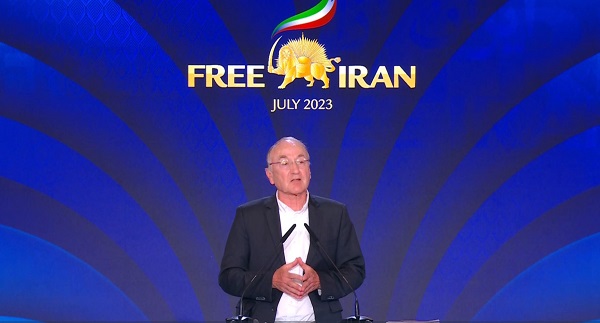
I’m very clear in my support for JVMI. They deserve every support. Today’s event, 35 years after the massacre in 1988 bears witness to that.
We owe a lot to the UN system which is working in a way, especially the Special Rapporteurs. Those are very important instruments for the international community and they should be used. The UN Human Rights Council held a special session on November 22 to investigate the alleged human rights violations in the Islamic republic of Iran during the protests that began in September. This is a good thing.
I hope the Commission, which will give its first oral report on the fifth of July, will be able to find the facts and able to address them, including the fates of individuals that we heard about in recent days.
We all agree that it’s not enough that the UN Fact-finding Commission was set up for the ongoing persecution of people since September 16. But we would really want to see something happen in regard to 1988.
We should jointly continue to appeal, as we’ve done in the last couple of months intensively, to the international community as such, but also to the High Commissioner for Human Rights and to the Human Rights Council to set up an investigation Commission in the massacres of 1988.
Kenneth Lewis (Sweden), Lawyer, Representing the PMOI
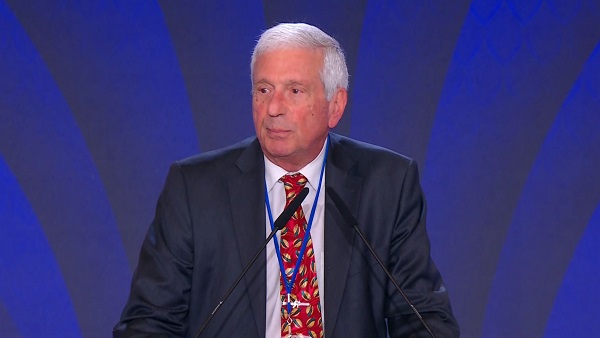
Finally, we have a historic trial in a Swedish court, where one of the perpetrators of the 1988 massacre has been on trial and the trial is still going on. I can tell you that the investigation presented in the Stockholm District Court is the best Fact-finding Commission that you can imagine.
The court went on for 92 days. The investigation is more than 11,000 pages.
You’ve already heard about Khomeini’s fatwa, and what it meant. In fact, what normally should be a religious opinion, but this was an order. And what does he say? Anyone who remains faithful to the People’s Mujahedin of Iran and who are in our prisons shall be executed. Quite simple.
This is the information that we have had in the Stockholm District Court. And this information is better than what any fact-finding commission is ever going to be able to find, because we had also 34 plaintiffs who testified.
Formally, I represent only 10 plaintiffs. In reality, I represent this whole movement. And let me tell you what this movement did during this trial. They created a museum, a film, and a model of the Gohardasht prison. That’s unbelievable effort that’s been made by my clients in Ashraf 3 to make this trial the success that it has been.
We have to understand also the regime has not been passive about it. It’s very strange because before Raisi was elected president, they were rather quiet about this case. We don’t really know why. As soon as Raisi came to power, he knew that in this trial, evidence was being presented every single day that implicated not only him but the whole regime. And as a result of that, you’ll notice that the Iranian press has become more and more hysterical.
They say that Nouri has been tortured and hasn’t been given a fair trial. This is so hypocritical, the evidence that we’ve heard, we know what torture was. Go to the museum in Ashraf 3 and you’ll see a clear picture of what real torture is. Nouri testified for five days. His victims were given five minutes.
Ebrahim Raisi, Nayyeri, Khamenei, all of them, we can put them all on trial because these were people who saw them and knew what they did. The important thing is this trial happened, the evidence has been presented, and we know not only that Hamid Noury is guilty, we know that all of these leaders are guilty.
Prof. Ariel E Dulitzky (Argentina), Chair of the UN Working Group on Enforced or Involuntary Disappearances (2013-2015)
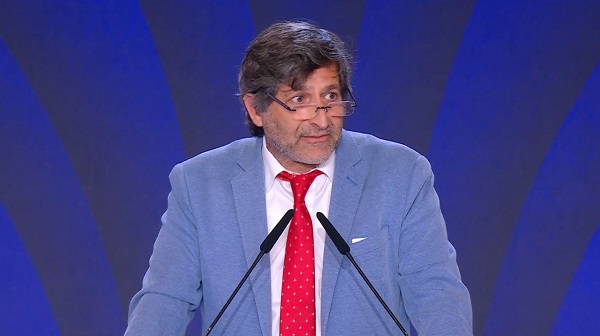
I want to speak of two numbers. First, 30,000 victims of the massacre. And I want to relate the 30,000 with the 30,000 disappeared individuals in my country. In Argentina, during the dictatorship, 30,000 people disappeared in the dictatorship between 1976 and 1983. Two of my cousins were among them. In those years, there was no UN working group on Enforced Disappearances.
The other number is 35. This is the 35th anniversary of the 1988 massacre. On the 35th anniversary of the UN Working Group on Enforced Disappearances, we celebrated it in the detention center of Argentina, where 5,000 people had disappeared. Most of them were tortured, most of them were killed, and 35 years later, I was sitting there representing the United Nations.
And let me tell you that when we talk about disappearances, we don’t talk about your disappearance. We are not talking about their disappearance. We are talking about our disappearance. We are all responsible for the clarification of the disappearances of everybody.
These are not numbers, these are real people, fathers and mothers, daughters and sons, wives and husbands, friends. They all had hopes, ideas. Remember 30,000 people, individuals. By definition of enforced disappearance, every single enforced disappearance is a state crime because it’s carried out by state officials.
For all the relatives of the people who disappeared in 1998, this is a continuous crime. It continues until the fate and whereabout of the person who disappeared is clarified, until the families receive information on what happened with their loved ones, until the bodies of those who disappeared are returned to their families so they can give a proper burial and they have a place where they can remember and pay their due respects. Until then, the crimes will keep being committed every single day.
Secondly, it’s not the question of the past. Because today, there are disappearances happening in different parts of the world. And we heard about crimes against humanity and genocide. When disappearance is committed in the context of a generalized attack against the civil population, that’s a crime against humanity and I will consider that is probably what happened in 1988 and for sure what happened during the military dictatorship in Argentina. These where crimes against humanity and disappearances could also be part of a genocide.
But regardless if we define this as a genocide or a crimes against humanity, enforced disappearances are a technique of terror. What these regimes intend to do when they practice disappearances is terrorizing the civilian population.
When we talk about enforced disappearances, the victims are many more. The victims are not only those who disappear. The victims are all of you, the relatives of those who disappear, because according to international law, according to the International Convention on Enforced Disappearance, a victim is not only the person who disappeared, but everybody else who suffered a harm due to the disappearance. So, when we are talking about disappearances, we are talking to many more people than just those who disappear.
The relatives have the right to the truth. Who did it? Why they did it? Who covered it up?
The international community has a role to play, to cooperate, to investigate and bring closure to the relatives of those who disappeared.
Dr. Melanie O’Brien (Australia), President of the International Association of Genocide Scholars (IAGS)
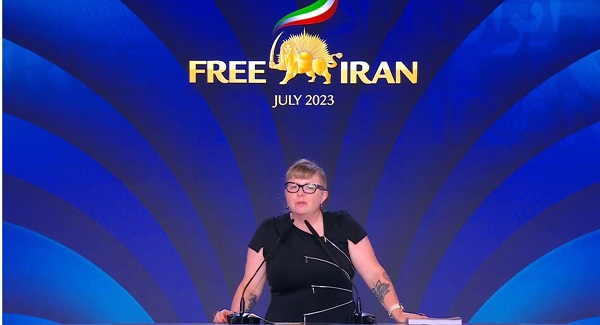
When perpetrators of past atrocities are not held accountable for their actions, we are doomed to see history repeat itself. This is the situation we find ourselves in with regards to the Iranian government and its human rights abuses, many of which amount to international crimes.
In 1988, political protests were curbed with thousands of people executed for their political and religious beliefs. Only one of the perpetrators of these crimes has been held accountable for their actions.
With the resumption of violence since the killing of Mahsa Amini, we see the same types of violence being carried out. Protesters in the street are being met with violence, with the security forces being ordered to severely confront protesters, beating them and firing upon them. Other protesters are arrested and detained, with hundreds already executed. Some of the those killed have been children.
Crimes against humanity are crimes committed as part of a widespread or systematic attack on a civilian population. The detention, disappearance, torture and killings of large numbers of Iranian civilians in 1988 and today certainly qualify as a widespread and systematic attack on the civilian population of Iran.
Obviously, the Iranian government is not going to hold itself accountable for crimes, including executions, torture and enforced disappearance. This is especially the case as we know that some of those responsible for the 1988 crimes have since been promoted up the ranks to high government positions, including the current president Ebraham Raisi, who was a Death Commission member.
The international community thus needs to unequivocally support accountability processes to ensure justice for the victims and their families who have not been permitted to properly mourn their loved ones.
What form those processes take, however, is the biggest challenge. The only option would be for the United Nations Security Council to refer the situation in Iran to the International Criminal Court as it did for the situation in Darfur, Sudan. However, this is very unlikely to occur because Russia, as a permanent member of the Security Council, would use its veto power over any proposed resolution to refer Iran to the International Criminal Court.
Domestic criminal law in third countries should be used. We’ve heard about the July 2022 conviction in Sweden of Hamid Nouri, and it’s a key example of the use of what we call universal jurisdiction against perpetrators of the 1988 killings.
And this is where a country prosecutes a national from any other country for international crimes committed anywhere in the world.
Sweden’s example should be followed by other countries. This would effectively render a travel ban on those who participated in the 1988 executions and those who are perpetrating current crimes, as they would be arrested if they travelled abroad. Therefore, this would complement any current sanctions regimes against Iranian individuals.
Other mechanisms that focus on truth telling, exposing the crimes of the current and previous regimes need to be established. It would be appropriate, as we’ve heard, for the United Nations to establish some kind of mechanism for investigation and truth telling.
Unfortunately, human rights law solutions are difficult and limited. Iran has never engaged significantly with the international human rights law system. It is a party to few human rights treaties. It does not subscribe to any individual complaints procedures in the United Nations human rights system.
However, there is certainly customary international law that could be used by other countries to bring a case against Iran in the International Court of Justice.
I call on leaders at national and international levels to implement these solutions to ensure justice of torture, enforced disappearance and executions in Iran.
Asghar Mehdizadeh, Former Political Prisoner, Witness to the 1988 Massacre
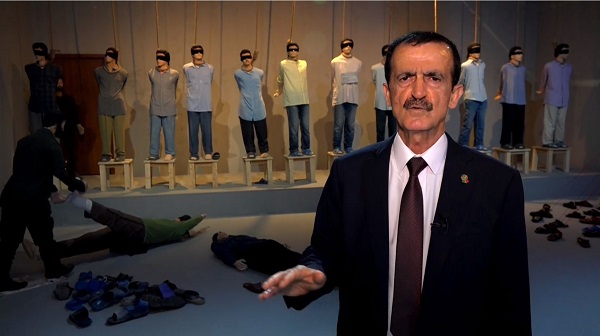
In Iran, I have spent in different prisons for 13 years. I was in Gohardasht prison for five years, including during the 1988 massacre. One scene that I remember vividly was being taken to the hall where the prisoners were hanged en masse.
One of the guards called the prisoners for execution. The prisoners showed no fear. One of the guards took me to the hall. Under my blindfold, I saw the bodies of executed prisoners piled on top of each other. The guard took off my blindfold and showed me the prisoners with nooses around their neck. Prisoners chanted “Hail to Rajavi, death to Khomeini!”
The guards started kicking the chairs from under the prisoners. When they reached the fourth person, the prisoners jumped themselves and denied the prison guards the chance to kill them. The guards where hysterical. They were punching and kicking the martyrs and they were pulling them down so they would choke faster. I decided then and there to continue their path.
Zinat MirHashemi, NCRI Member and Central Committee Member of the Organization of Iranian People’s Fedai Guerrillas
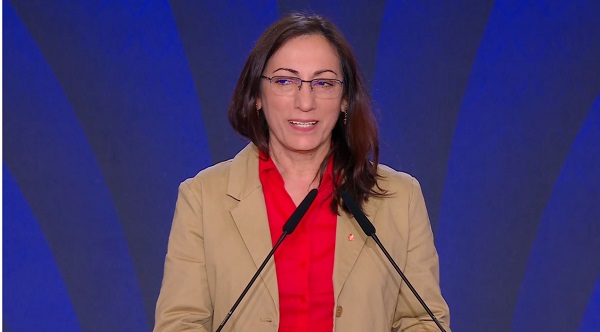
It is good to have these witnesses who survived the Pahlavi and the mullahs’ dictatorship. Regarding the justice-seeking movement, I must say this movement is for everyone. Its success is not just for Iran but will be an end to the cycle of state-sanctioned murder and a success for the movement that rejects oppression, and torture. Everyone who believes in these values must support this movement.
These days, the remnants of Shah’s regime are recalling the past. They want to hide the crimes that the shah dictatorship committed. The people of Iran are fighting for their right to life, to equality, and they will continue their struggle until the mullahs’ regime is overthrown. The regime tries to extinguish these flames. It targets the organized opposition that has the pivotal role in bringing down this autocratic regime.
Appeasing the regime and normalizing relations with them is against what the people of Iran demand. The regime’s endeavors to revive the appeasement policy shows their fear of the opposition movement.
Appeasement will not create a better environment for the international community. The actions of regime officials can be summarized in stealing from the people, exploiting the labor force, destroying the environment, and accumulating the wealth in the hands of two percent of society.
The current revolution is a revolution that has gone beyond the regime. Any policy that supports the regime is against this movement and the demands of the people of Iran and the justice movement.
Pierre Sané (Senegal), Secretary General of Amnesty International (1992-2001)
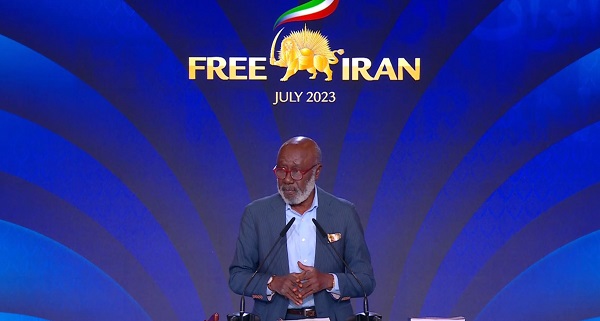
Human rights are in crisis again. Iran continues to remain to be the graveyard of human rights, almost to the indifference of the international community. When it comes to human rights violations, Iran checks all the boxes: massacre, torture, execution, enforced disappearance, violence against women, confiscation of property, brutality. It seems that it is very hard to create solidarity among progressive governments. There is hesitation to criticize Iran and Islamic Revolution in face of Islamophobia.
There is hesitance by the progressive global movement to join hands with Iranian freedom fighters. I think this is a confusion. When we are talking about human rights violations, we’re talking about victims. When we talk about human rights violations, we talk about international human rights law that binds all governments, irrespective of their ideology. When we talk about human rights violations, we talk about universal rights that apply to all members of humanity. And the last time I checked, the Iranian people were still members of humanity.
Irrespective of the context, irrespective of geopolitical developments, we cannot—because of politics—sacrifice our duty of solidarity to all those who are victims of human rights violations and to all those who are fighting for a human rights regime. That starts with the end of impunity. There cannot be human rights if impunity is allowed to prosper. And the end of impunity is the basis for international solidarity, which is nothing more than the expression of our obligations towards other fellow human beings.
There is no human rights if there is no human obligations. Solidarity is the key and we showed how solidarity was successful in ending apartheid in South Africa, in ending the military dictatorship in Latin America, in bringing an end to the Vietnam War. It is indeed time that we step up the solidarity for the struggle for human rights in Iran.
Amb. Zorica Marić-Djordjević (Montenegro), Special Representative of Montenegro to the UN Human Rights Council 2013-2015
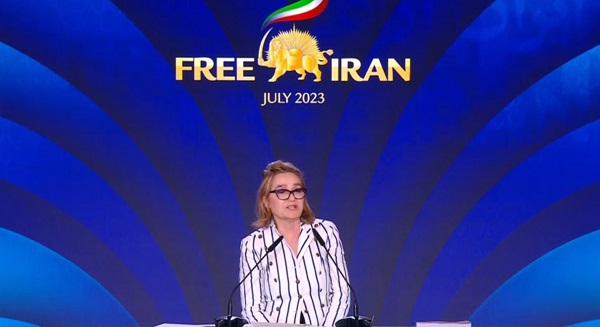
It is impossible to end the impunity of the religious regime without changing the regime in Iran. The regime is a threat to the region and the world. It is the world’s largest state sponsor of terrorism, a greedy partner to the international community. It continues funding militant groups in the Middle East. They are still operating on the rule of death. Let us call on the Secretary General of the UN to demand the regime of Tehran to repeal its fatwa and release all political prisoners without delay.
In the fifth decade of the barbaric rule of the mullahs’ regime, the UN faces a challenge. The people of Iran demand change. The regime’s own investigations into its crimes yielded no results. Many perpetrators of the 1988 massacre are still in power today and none have been prosecuted.
The only success was a Swedish court that sentenced former prison guard Hamid Nouri to life in prison. Mrs. Rajavi said that women’s rights is not just about choosing to veil or not. They should choose their life, their leaders. And I add that it is the right of women to be the leaders of future Iran.
30th August is the day of victims of enforced disappearance. We must remember all the victims.
We want an Iran where all people can manage their everyday lives and can accomplish their full potential.
It is high time to establish an independent International Commission with an international mandate for Inquiry to clarify the fate and whereabouts of missing and forcible disappeared persons in Iran’s 1988 massacre.
Anand Grover (India), UN Special Rapporteur on the Right to Health (2008 to 2014)
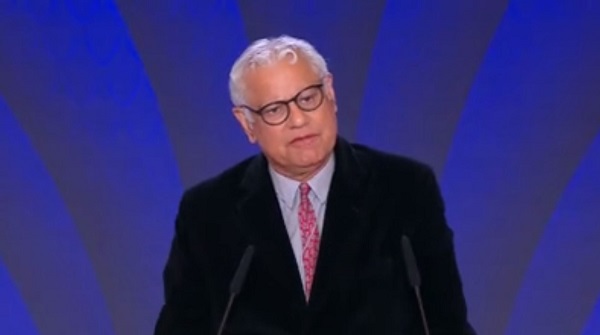
30,000 or so Iranian citizens and my comrades were executed in 1988 by the Iranian regime. The crime against humanity to ensure that the struggle is not forgotten but becomes an impetus for continued struggle and final victory towards a free Iran. I get a chill down my spine when I think about the way the Iranian regime executed these people.
Being a strong proponent of women’s rights in India, I’m glad to note that the leadership of this movement is in the hands of a very capable woman, Mrs. Maryam Rajavi. And I’m sure that in the future, there’ll be young women who will actually continue the leadership of this movement.
I’m also glad to note that the Resistance movement comprises different groups with different ideas, but with a very clear common aim to get rid of the repressive Mullah leadership in Iran.
The regime in Iran did not let the relatives of those executed know of their fate or death or whereabouts. This is despite thousands of demands by the Iranians and the international community. For a long time there was no admission of the fate of those executed.
Later, in various interviews, some of those in power admitted that those people were executed because of the fatwa, or decree, passed by highest authority to execute those who remain loyal to the Mujahedin.
For me, this is one of the finest moments for people who believe in something so simple. I will not agree with you and I’m prepared to die. Can you think about this? It’s an amazing feat of human effort to be able to do it. Please appreciate the conviction of their beliefs, the bravery and the courage of their conviction.
Big people have fallen at this precise moment. But these 30,000 people, they remain steadfast and they were told, are you with us or with the Mujahedin? If you remain with the Mujahedin, you’ll be dead. And they stayed loyal to their faith and their conviction. There cannot be a higher duty than that. I don’t know whether I would be able to do the same in the circumstances.
Whenever I think about these people, I can only salute the brave and courageous people of Iran who gave up their life for an idea. And what is that idea? It is an idea that one can have a belief different from those who rule in a society, and they can voice it without any reprisal. It is an idea that people of different faiths, ethnicities, race, and gender can live in the same society as sisters and brothers and exercise their thoughts by speech and beliefs free from reprisal. That is the future of idea of free Iran, in my opinion.
So the victims of those 30,000 people are entitled to justice in such a society. Liberty of thought, expression, belief, faith, and worship, that is exactly what they were exercising.
You have to fight back against injustice, but not with injustice, but with care for people. So those people who were executed need justice to be delivered to them. We must keep on demanding from the Iranian government, as people have demanded before us. Provide accurate information on the faith and whereabouts of the individuals who are no longer there. Provide accurate death certificates. Stop threats and harassment of families of those who are executed and most importantly, which you all have highlighted. Investigate and prosecute those responsible for impunity. This is the most difficult thing to achieve in Iran today. But it is the most important in the short and the long run. It is here that the international community must put their way to support efforts to get justice for the victims.
Having seen the UN from the inside, I’m dismayed, but not surprised.
The reports of the UN Special Rapporteurs, the Committee on Involuntary Disappearances, United Nations High Commissioner for Human Rights and the Office of the High Commissioner and the Secretary General of the UN, they were able to pass the UN Generally Assembly resolution in December 1988. But the situation in Iran was not referred to the Security Council. The UN General Assembly did not follow up on the resolution, and the UN Commission on Human Rights has not taken action. I’m dismayed, but not hopeless. I’m hopeful that this will happen.
Let us make a plan to do that in the near future and show that inquiry into executions of 1988 is conducted by the UN in accordance with the long-standing demand and, if that is not possible, an independent body of judicial members.
Khadijeh Borhani, Former Political Prisoner, Witness to the 1988 Massacre
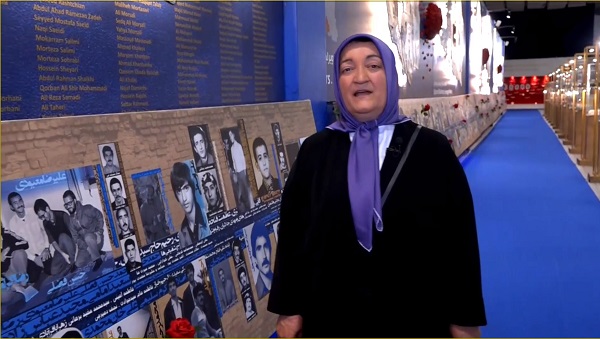
My elder brother was arrested in 1977 by the Shah’s SAVAK and sentenced to seven years in prison. He was released during the revolution, but later he was arrested by Khomeini’s regime and killed under torture. Another of my brothers was also arrested and killed by the regime. And another two of my brothers were executed during the 1988 massacre. One of my brothers was arrested when he was 15 years old and then executed. I was arrested when I was 12 years old and spent several months in prison. I was released thanks to the efforts of my father.
I was forced to regularly report myself to the authorities and was banned from leaving the province. My parents died due to the mental pressure of the martyrdom of six of my siblings, as well as the pressure imposed by the regime. I decided to join the MEK to continue their path.
Irene Victoria Massimino Kjarsgaard (Argentina), Former Rapporteur of the High Criminal Court of Buenos Aires Province
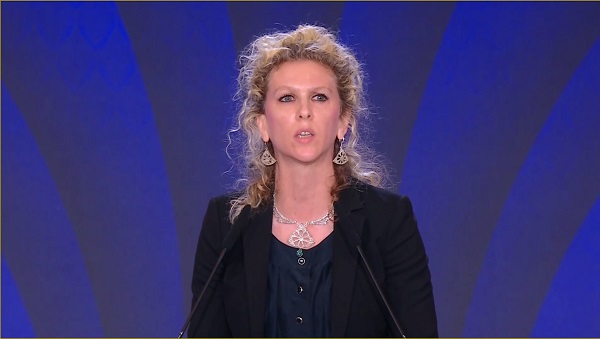
The barbaric acts of today have similarities with the 1988 massacre, which started with Ayatollah Khomeini’s order in July of that year to execute an estimate of 30,000 political prisoners in Iranian jails. The 1988 massacre was carried out by the current president of Iran, Ebrahim Raisi, one of the four members of the Death Committee for Tehran at that time. The lack of accountability for the perpetrators of the 1988 massacre as well as the lack of justice and recognition for the victims is directly linked to the institutional crimes committed today. Impunity is a crime by itself.
The crimes committed by the military juntas [of Argentina] during those years and then, the 1988 massacre in Iran have concerning similarities.
From a legal perspective, the crime of enforced disappearance has a unique characteristic uncommon to many crimes. It is an ongoing crime. It produces effects for as long as the disappearance exist. A permanent or ongoing crime is constituted by an unlawful, prolonged action without interruption in time. In Iran, this crime started in 1988, and it’s not over.
Moreover, unlike other crimes of human rights violations, the crime of enforced disappearance is not defined by a particular action, but as the continuous absence of documents and bodies, dead or alive. Related to the victims, the crime of enforced disappearance creates an overwhelming absence and is precisely this overwhelming and constant absence that defines it. The disappearance is a forensic concept defined by and for the legal sphere. That’s the key aspect of the legal definition of disappearance lies in the permanent and continuous absence of the body and of the documentation of their whereabouts. This permanence allows the triggering of jurisdictions and laws that otherwise would be difficult to finally apply to end the vicious circle of impunity that once again is feeding violence in Iran. For 35 years, families and friends of the disappeared Iranians have been longing for the bodies of their loved ones for documentation and information that would allow them to know exactly what happened to them and where they are.
I have often reiterated that accountability as a form of justice represents the beginning of the healing process. Moreover, accountability also helps identify perpetrators, helping to destroy frameworks of criminal power. Unfortunately, perpetrators are not always available for punishment. However, this should not be a deterrent in any justice seeking process. Justice is essential for the victims. Besides being a fundamental right, without justice, we live in a permanent state of denial.
Stanislav Pavlovschi (Moldova), Minister of Justice (2019)-European Court of Human Rights Judge (2001-2008)
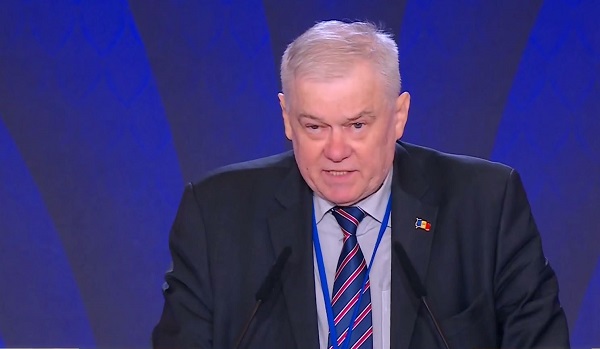
The 1988 massacre was a tragic event. It shocked the entire civilized world. Justice delayed is justice denied. The time for justice has come. Such tragic events should have no place in the world based on human dignity.
The world should do everything to guarantee that it will never happen again. The impunity of those involved in this crime is very serious. The UN is trying to take some steps. Without an investigation, it would be impossible to establish the truth. Would these tragic events happen if there was a real judiciary system in Iran in which judges are truly impartial and act impartially, where defendants can choose their own lawyers, where judges only make decisions after reviewing all evidence and testimonies?
It is possible to repair judicial errors when a person is sentenced to prison. But how do you repair mistakes when a person has been executed?
Life is given to human beings by God, and only God can take it away. There is a lot of credible information about the use of torture by law enforcement agents. The European convention of human rights forbids all forms of torture and denigrating punishments.
The regime is killing youth, the future of the country. Iran has a very rich culture and history. Iranian people deserve to enjoy modern life.
The time has come to open a discussion for an inter-Asian court of human rights to address human rights violation in Iran and other parts of Asia.
Ingrid Betancourt, Former Colombian Senator and Presidential Candidate for 2022

This is not about ideology, right or left. There is something that is deeply sinking in our souls. When we come here, we meet good human beings. When you do politics you must sometimes sit next to people you don’t like because you don’t like what they represent. But here, you see good people who believe what they say and do what they believe in.
35 years ago, 30,000 people were massacred. But what is ongoing today is the ongoing massacre of the people of Iran. It’s 44 years of massacre, violation of human rights. We are dealing with the same people, it’s the same cause, and we are facing the same crimes.
I’m puzzled with what the world does. I’m a revolutionary at heart in the sense that I don’t like what I see, that the leaders of our country, knowing what they know, are doing what they do. We know that Iran is on the path of obtaining nuclear bombs. They have enough uranium to destroy our countries. And we still want to sign a nuclear agreement with Iran. We know that Iran is providing weapons to the most absurd and bloodthirsty in today’s world, Putin, which is coming to Ukraine like a barbarian with no other justification than putting his name in history by killing people. Iran is supplying drones to Russia to kill Ukrainians. And we are still insisting to have an agreement with Iran, which will allow them to continue killing us.
We know they kidnap people like you and me, they accuse them of being spies. These people, women and men, tourists, are detained in the prisons of Iran. We are here in Europe freeing from our jail the criminals of the mullahs and allowing them to blackmail us.
What are we doing? Sometimes we have the craziness to give our enemies a rope to hang our democracies. That is what we’re doing with Iran. Some of us have said that this is a policy of appeasement. We know what happens with appeasement. But this is not appeasement. This is kneeling before the dictators. We are paying the price of this policy.
I’m scandalized to think that a French government kneels and bows under the pressure of Iran and decides that it’s not possible to have a meeting of the Iranian resistance. The world is so dangerous that a democratic country like France cannot guarantee the security of its citizens. And the Iranians are so dangerous that they can kill all of us. In 2018, the Belgian justice did their work and sentenced the terrorists to jail.
But today, people are beginning to see that there is an option, a political option to the craziness of the mullahs.
I’m happy that we are not bowing, and we are not kneeling, and we are all standing together. We’re standing because in Iran, girls, women, young men everyone are standing, and they are getting shot with real bullets. And we are standing with them, we are standing with Maryam Rajavi. And we are standing with our brothers and sisters of Ashraf. Because it will not happen again.
Jean-François Legaret, Former Mayor of Paris 1st Arrondissement
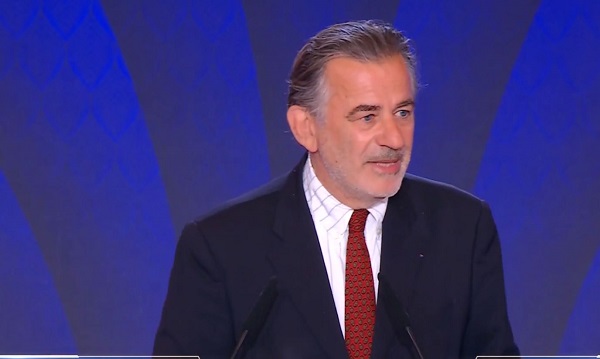
These lives that have been lost will not come back. This is why it is a genocide and a crime against humanity and why Iran’s regime must be taken to court. We can see all the elements come together that can become the first steps of a revolution. The regime can no longer suppress the people, the women fighting for their fundamental rights, which are embodied in the Ten-Point Plan of Madam Rajavi.
The Iranians no longer want dictatorship irrespective of its size and shape, this is why they are chanting no to the Shah and no to the mullahs.
We are very hopeful that the day of freedom will come. Let’s get ready for the day of a free Iran.
Gilbert Mitterrand (France), President of the Danielle Mitterrand Foundation (France Liberte)
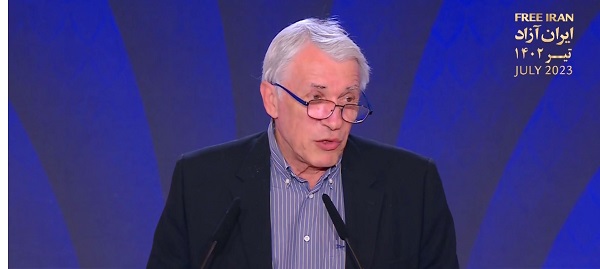
The fact that we’re here shows that nothing can prevent you from holding these rallies. It is very important to ask for truth and justice and make sure Iranian authorities are held accountable for what they did and what they are doing to the population.
Our foundation has supported Maryam Rajavi for a long time, as well as the NCRI and the residents of Ashraf.
On behalf of human rights and international community, France Liberte will continue to stand with you as we stood with you when you were threatened by the regime’s policies and blackmailing. The regime is now using hostage-taking as part of its policy.
We must ask for clarification on the issue of the 1988 massacre. Iranian authorities have committed crimes against humanity for 40 years. Ebrahim Raisi was personally a member of the Death Commission in 1988.
I’m sure the will and courage will prevail. We are here to ask for all these processes that started about the regime’s crimes to become real. Every day, crimes are committed. It wouldn’t be fair to only ask for accountability for the 1988 massacre.
Iran’s people deserve to have the choice to choose their future. This is why we support Maryam Rajavi’s Ten-Point Plan for a transition to democracy in Iran. It is up to Iranians to choose their destiny, but we must support them in their struggle.
Eric Abetz (Australia), Senator (1994-2022); Leader of the Government in the Senate and Minister for Small Business (2013-2015)

Those of us blessed with and born into freedom believe it is an inalienable right, which it is. But also foolishly, we often believe it can’t be taken away. It can. And those of us born into countries that enjoy freedom. Have a duty and responsibility to assist those that are fighting for the same freedoms we enjoy.
Australians salute, support and stand in solidarity with the ever growing Free Iran movement. That said, I believe Australian governments of both persuasions should do, and could do a lot more in the cause of a free Iran.
Can we agree that evil is evil, that the Tehran tyrants are evil and each day they remain in power is a day too long? The Free Iran Movement is a genuine grassroots people movement.
While I recognize the plight of the Iranian people, it was not until local champions of your community further educated me and compelled me to commit myself to the Free Iran movement.
From the 30,000 brutal executions in 1988 to the 300 plus so far this year by the brutal regime, any vestige of justification, if there ever was one, for this dictatorial, repressive regime has been absolutely forfeited. So time for talk and condemnation or reform has long passed. The need for talk has been supplanted by the need for action. The need for condemnation or reform has been supplanted by the need for removal of the regime. A regime which instead of protecting its own, kills them. A regime which backs up like minded, brutal dictatorships. A regime which sponsors terrorist organizations. Indeed a regime which itself engages in terrorist activities is not worthy of being feted around the negotiating table.
The United Nations might reflect on its Charter and consider acknowledging the NCRI and Mrs. Rajavi as the legitimate government for the people of Iran.
World history tells us all that appeasement emboldens bullies and tyrants alike. Appeasement has never worked, yet too many Foreign Affairs departments believe that somehow this time, it will be different. May I politely remind the world’s foreign affairs experts of the definition of stupidity, repeatedly doing the same thing and expecting a different outcome. It won’t happen.
What will guarantee success is a plan. We have one, a Ten-Point Plan. What will guarantee success is inspiring leadership with integrity. We have it with Mrs. Rajavi. What will guarantee success is the determination of the Iranian people, which remains resolute and has not been broken or shaken through imprisonment, torture and bloodshed. What will guarantee success is external pressure which this conference is providing in such a powerful, persuasive way and what will also guarantee success is our personal commitment to the cause of a free Iran.
Tony Clement, Former Minister of Treasury of Canada (2011-2015)
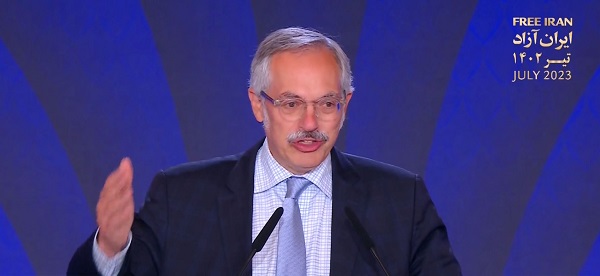
I feel for all of the victims. Of the Iranian government, that terrorist government, inside Iran, outside Iran, there are many, many. I want to pay tribute to NCRI and MEK for keeping the light lit so that we never forget all of those victims.
It’s important to say that. This Iranian government is dangerous. But it’s also kind of incompetent. It takes incompetence to think the best defense of killing innocents in the Ukrainian flight is to say we thought it was a cruise missile. The regime did the same with Covid.
Why am I saying so much about their incompetence? I’m saying it because it gives us hope. They are not infallible. They are not perfect by any stretch of the imagination. And they will be defeated by a combination of the actions of Iranians both inside and outside Iran, and by the weight of their own idiocy. We must grieve for those who lost their lives. But do not despair. A new Iran is around the corner.



